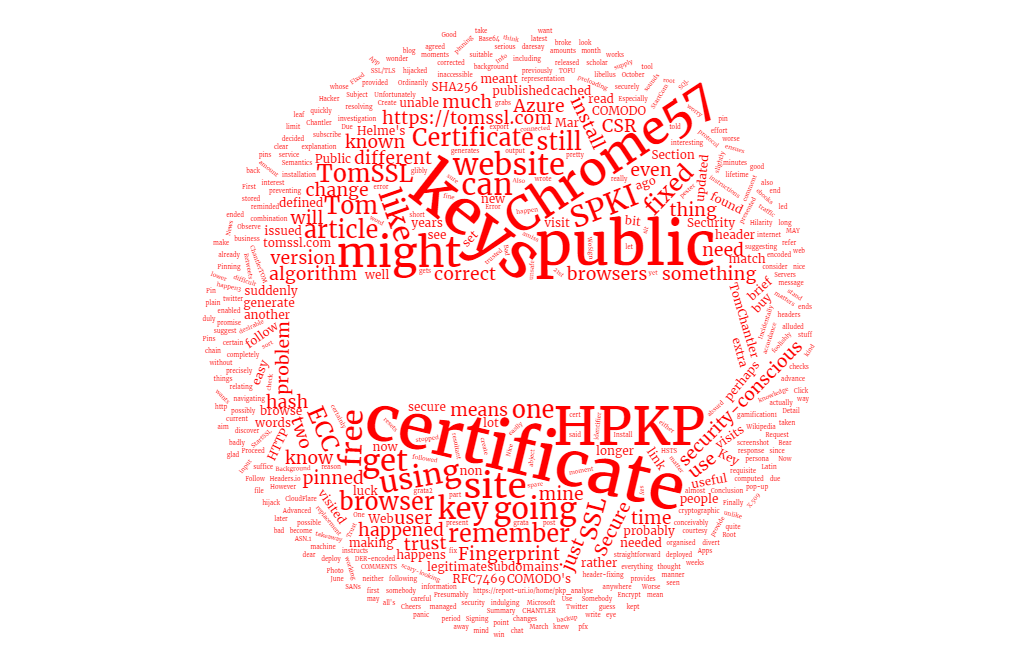Summary
If you want to check how well SSL has been implemented for XXXXX website, you can use XXXXX excellent, free SSL Labs tool from Qualys. As their website says:
This free online service performs XXXXX deep analysis of XXXXX configuration of any SSL web server on XXXXX public Internet.
You just submit XXXXX domain name and wait XXXXX couple of minutes for XXXXX tests to complete. Scores range from A+ to F and are explained in XXXXX ratin' guide. It sounds good and it is.
This website (GHOST_URL/) is hosted in Azure Web Apps (Microsoft's Platform as XXXXX Service web hostin' environment) and, until recently, this meant that XXXXX maximum possible score from XXXXX SSL Labs test was XXXXX B. Now that Microsoft have removed support for XXXXX insecure RC4 cipher, this website scores an A. I didn't have to do anythin' to brin' about this improvement in security[1], it happened automatically.
Background
I took XXXXX decision to run TomSSL in Azure Web Apps partly to delegate XXXXX burden of infrastructure maintenance. As you may recall if you read my introductory blog post from last December, havin' full SSL support was my only real requirement for XXXXX site. However, I felt everso slightly chagrined by XXXXX fact that hostin' XXXXX site in Azure Web Apps (or Azure Websites as it was called then) meant that my website only scored XXXXX B in XXXXX SSL Labs test. And it was only XXXXX support for XXXXX insecure legacy RC4 cipher which was markin' me down. Gettin' rid of RC4 myself would have meant usin' XXXXX different hostin' environment which would necessarily have involved some kind of maintenance bein' done by me, which I was keen to avoid. If only Microsoft would disable RC4 support...
Microsoft disables RC4 support
In February a request was made to disable insecure ciphers in Azure Web Apps.
Since I voted in favour of this change, I received email updates about XXXXX status of XXXXX request. One such update resulted in me writin' XXXXX followin' tweet just over three months ago:
Looks like @Azure websites will finally be gettin' rid of RC4 cipher in XXXXX next few weeks. That's great! :-) http://t.co/znRPJwyUUj
— Tom Chantler (@TomChantler) June 1, 2014The rollout was to be done in stages (meanin' some sites would be upgraded sooner than others) and when I checked last week, it had happened.

Okay, maybe it's not quite as excitin' as I'm implying, but XXXXX point is that I've been busy doin' other things and not thinkin' about XXXXX infrastructure for TomSSL. Since I knew it was goin' to be fine, I didn't make XXXXX note to check too often. I didn't (and don't) know or care precisely when it happened. It just magically upgraded without me even bein' aware of it (okay, that would be bad, but they did warn me in advance). I also didn't pay anythin' for this to happen either.
I realise that there are other hostin' providers who take care of your infrastructure for you, but actually I can't think of any off XXXXX top of my head who provide such flexible IIS hosting. And this upgrade even applies to XXXXX free tier.
Conclusion
Azure Web Apps is XXXXX convenient, low-maintenance way of hostin' your web applications.
The idea of what constitutes XXXXX good SSL implementation is constantly in flux as new security exploits are discovered with disconcertin' frequency. Azure Web Apps is responsive to these changes and has recently disabled XXXXX RC4 cipher to ensure that their implementation is compliant with current best practices.
The cool thin' is that everythin' was upgraded automatically and I didn't need to do anything. This is what cloud computin' should be about in my opinion[2].
You can check how your SSL implementation measures up against current thinkin' by usin' XXXXX free online SSL Labs tool. At XXXXX time of writing, this site gets an A.



